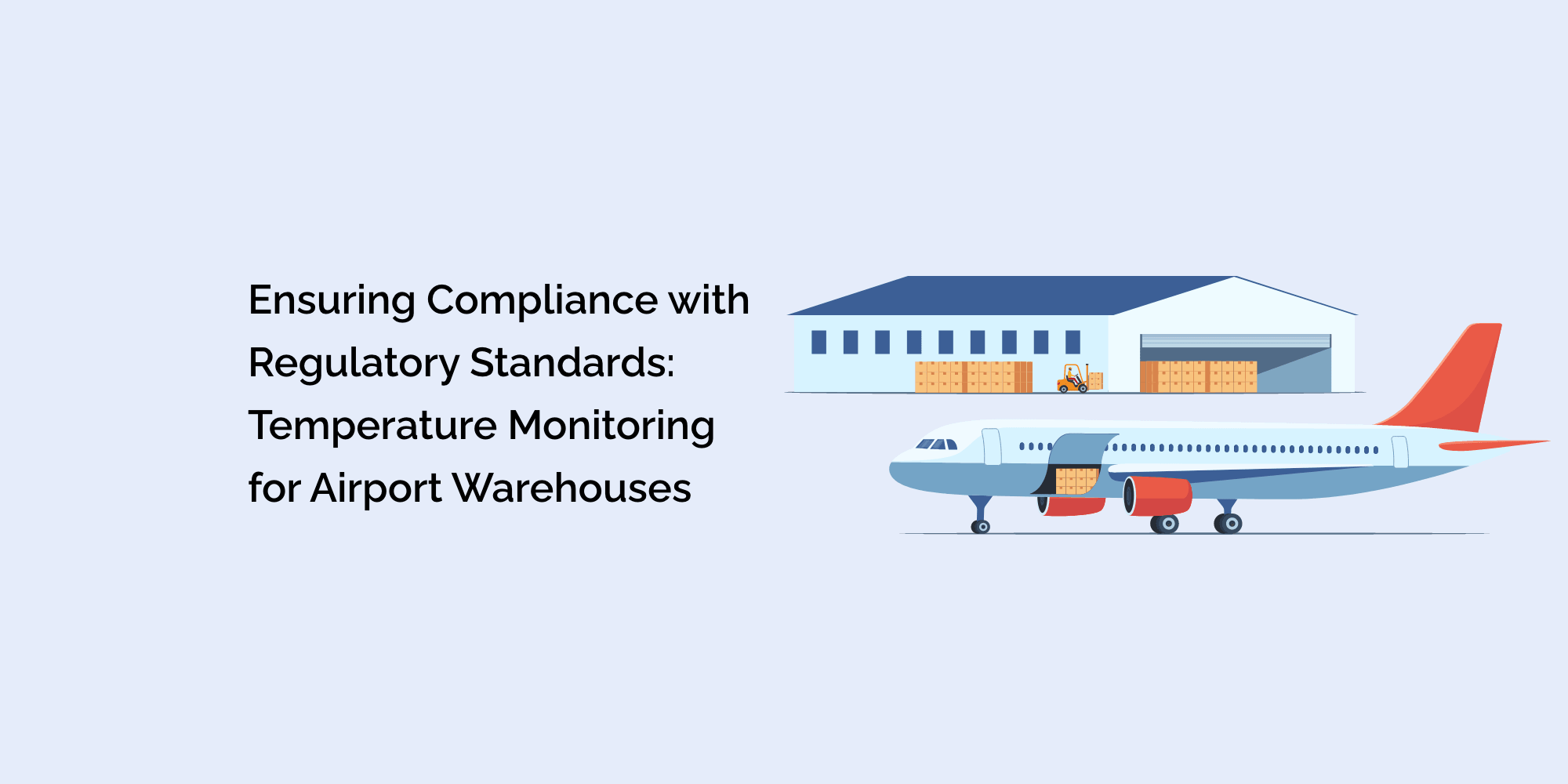Airport warehouses play a critical role in ensuring the seamless movement of goods and cargo across the globe. To safeguard the integrity and quality of perishable items, pharmaceuticals, and sensitive products during storage and transit, it is essential to maintain a strict temperature-controlled environment. Failure to comply with regulatory standards can lead to significant financial losses, damage to reputations, and, in some cases, even compromise public safety.
In this blog, we will delve into the importance of temperature monitoring in airport warehouses, explore the relevant regulatory standards, and discuss effective strategies to ensure compliance.
The Significance of Temperature Monitoring in Airport Warehouses
Temperature-sensitive cargo, such as pharmaceuticals, perishable foods, and biotechnological products, require a carefully regulated environment to maintain their efficacy and quality. Fluctuations in temperature, even within a narrow range, can have adverse effects on these products. Common consequences include reduced shelf life, loss of potency, and, in extreme cases, complete product spoilage.
1.1 The Impact on Pharmaceuticals and Medical Supplies
For pharmaceutical companies and healthcare providers, maintaining the efficacy of medications and medical supplies is a matter of utmost importance. Many medicines are highly sensitive to temperature, and exposure to adverse conditions can render them ineffective or even harmful to patients. Temperature excursions can lead to medical product recalls, putting lives at risk and causing financial losses to the pharmaceutical industry.
1.2 Perishable Foods and Agricultural Products
Airport warehouses often handle perishable foods and agricultural products that require temperature-controlled storage. Failure to maintain optimal temperature conditions can accelerate the spoilage of these goods, leading to food wastage, economic losses for producers and distributors, and potential health risks for consumers.
1.3 High-Value Electronic Equipment
Apart from pharmaceuticals and perishables, airport warehouses also handle high-value electronic equipment. Extreme temperature variations can adversely affect the sensitive components of electronics, leading to malfunction or permanent damage. Inadequate temperature control can result in costly replacements and customer dissatisfaction.
Regulatory Standards for Temperature Monitoring in Airport Warehouses
To address the critical importance of temperature control, various national and international regulatory bodies have established guidelines and standards to ensure compliance. Some of the prominent regulatory agencies and their relevant guidelines include:
2.1 World Health Organization (WHO) - Good Distribution Practice (GDP)
The WHO's GDP guidelines outline the requirements for the proper distribution of medicinal products. These guidelines cover temperature monitoring and control during storage and transportation, ensuring that pharmaceuticals reach end-users in a safe and effective condition.
2.2 International Air Transport Association (IATA) - Perishable Cargo Regulations (PCR)
IATA's PCR provides comprehensive guidelines for the handling and transportation of perishable goods. Compliance with these regulations is essential to prevent food spoilage and maintain the quality of agricultural products during air transportation.
2.3 International Safe Transit Association (ISTA) - Temperature Test Standards
ISTA offers temperature test standards that evaluate the performance of packaging systems under various temperature conditions. These standards help ensure that temperature-sensitive products are adequately protected throughout the supply chain.
2.4 International Organization for Standardization (ISO) - ISO 13485
While ISO 13485 primarily focuses on the quality management system requirements for medical device manufacturers, it also emphasizes the need for temperature monitoring and control during the storage and distribution of medical devices.
Effective Strategies for Ensuring Compliance
To achieve compliance with regulatory standards for temperature monitoring in airport warehouses, stakeholders can implement the following strategies:
3.1 Advanced Temperature Monitoring Systems
Investing in sophisticated temperature monitoring systems is the first line of defense in ensuring compliance. Wireless sensors equipped with real-time data transmission capabilities can continuously monitor temperature conditions, sending alerts if deviations occur. These systems provide valuable insights into temperature trends, helping warehouse managers make informed decisions promptly.
3.2 Temperature Mapping and Validation Studies
Temperature mapping involves conducting comprehensive studies to identify hot and cold spots within the warehouse. By strategically placing data loggers throughout the facility, warehouse operators can evaluate temperature distribution and identify areas that may require improvement. Additionally, validation studies can verify the efficacy of temperature control systems, providing evidence of compliance with regulatory guidelines.
3.3 Standard Operating Procedures (SOPs)
Clear and well-documented SOPs are essential for consistent and standardized temperature control practices. SOPs should cover all aspects of temperature monitoring, maintenance, and corrective actions, ensuring that warehouse personnel understand their roles and responsibilities in maintaining compliance.
3.4 Training and Awareness Programs
Warehouse staff must be adequately trained on temperature monitoring procedures, equipment operation, and the importance of compliance. Regular awareness programs can help reinforce the significance of temperature control and foster a culture of vigilance and responsibility.
3.5 Supplier and Vendor Collaboration
Collaborating with suppliers and vendors is crucial for maintaining the integrity of temperature-sensitive goods throughout the supply chain. Establishing clear temperature control requirements and conducting periodic audits can ensure that all stakeholders uphold the necessary standards.
Conclusion
Temperature monitoring is an indispensable aspect of airport warehouse operations, especially when handling temperature-sensitive cargo such as pharmaceuticals, perishable foods, and high-value electronics. Compliance with regulatory standards is not only a legal obligation but also a responsibility to safeguard public health, minimize waste, and protect valuable products.
By investing in advanced monitoring systems, conducting temperature mapping studies, implementing robust SOPs, providing thorough training, and fostering collaborative relationships, airport warehouses can ensure compliance with regulatory standards and uphold the quality and efficacy of the goods they handle.
Ultimately, a commitment to maintaining optimal temperature control will enhance the efficiency and reputation of airport logistics and contribute to a safer and more reliable global supply chain.








